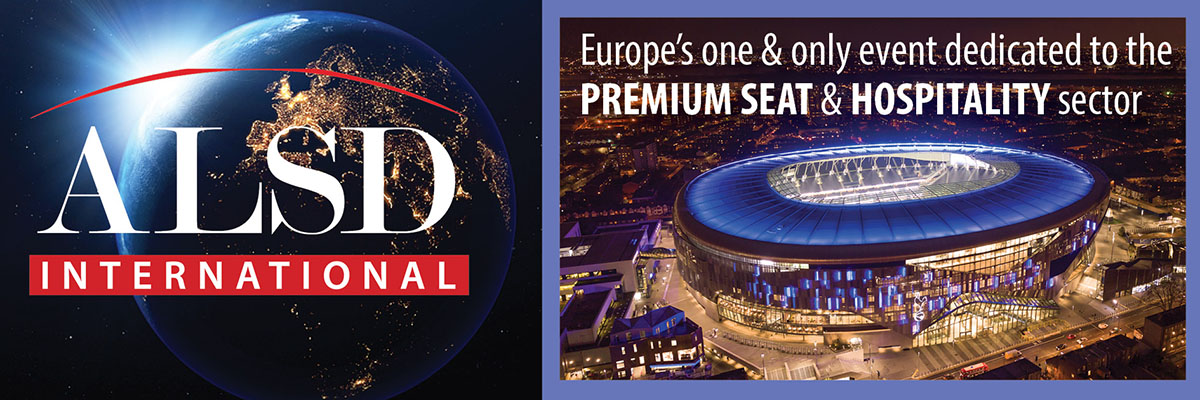- November 5, 2022
- Posted by: SportsV
- Categories: Featured Articles, Features, Home News, Industry News, News, Press Releases
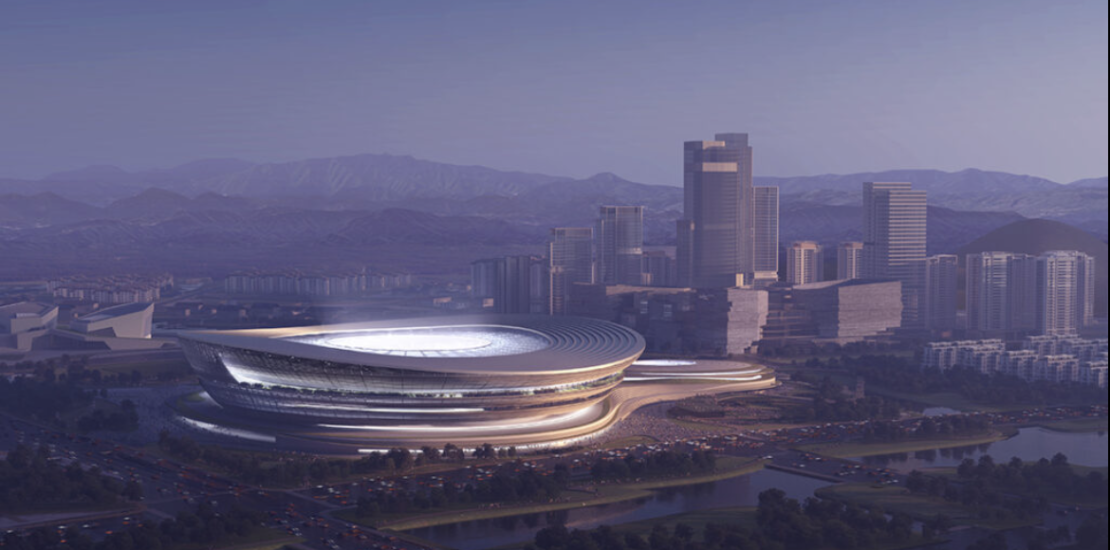
Zaha Hadid Architects (ZHA) has won the competition to design the new Hangzhou International Sports Centre. The plan incorporates a 60,000-seat football stadium and practice pitches, a 19,000-seat indoor arena, as well as an aquatics centre with two 50-metre pools.
The sports centre includes a new riverfront park and public plazas with direct access to Lines 3 and 5 of the developing city’s metro network. It is situated within Hangzhou’s Future Science and Technology Cultural District.
One of the world’s leading centres of e-commerce, Hangzhou is home to many of China’s largest technology companies, which attract IT professionals and entrepreneurs from across the country to live and work in the city.
Accommodating the city’s growing population, the Hangzhou International Sports Centre’s design provides a variety of facilities for grassroots players to professional athletes. The compact design of each venue, together with their orientation and composition, allows almost half of the site to be transformed into new public spaces for the city.
Integral to the district’s urban plan and the natural landscapes along the riverbank, the centre incorporates new parks and gathering places for events, recreation and relaxation.
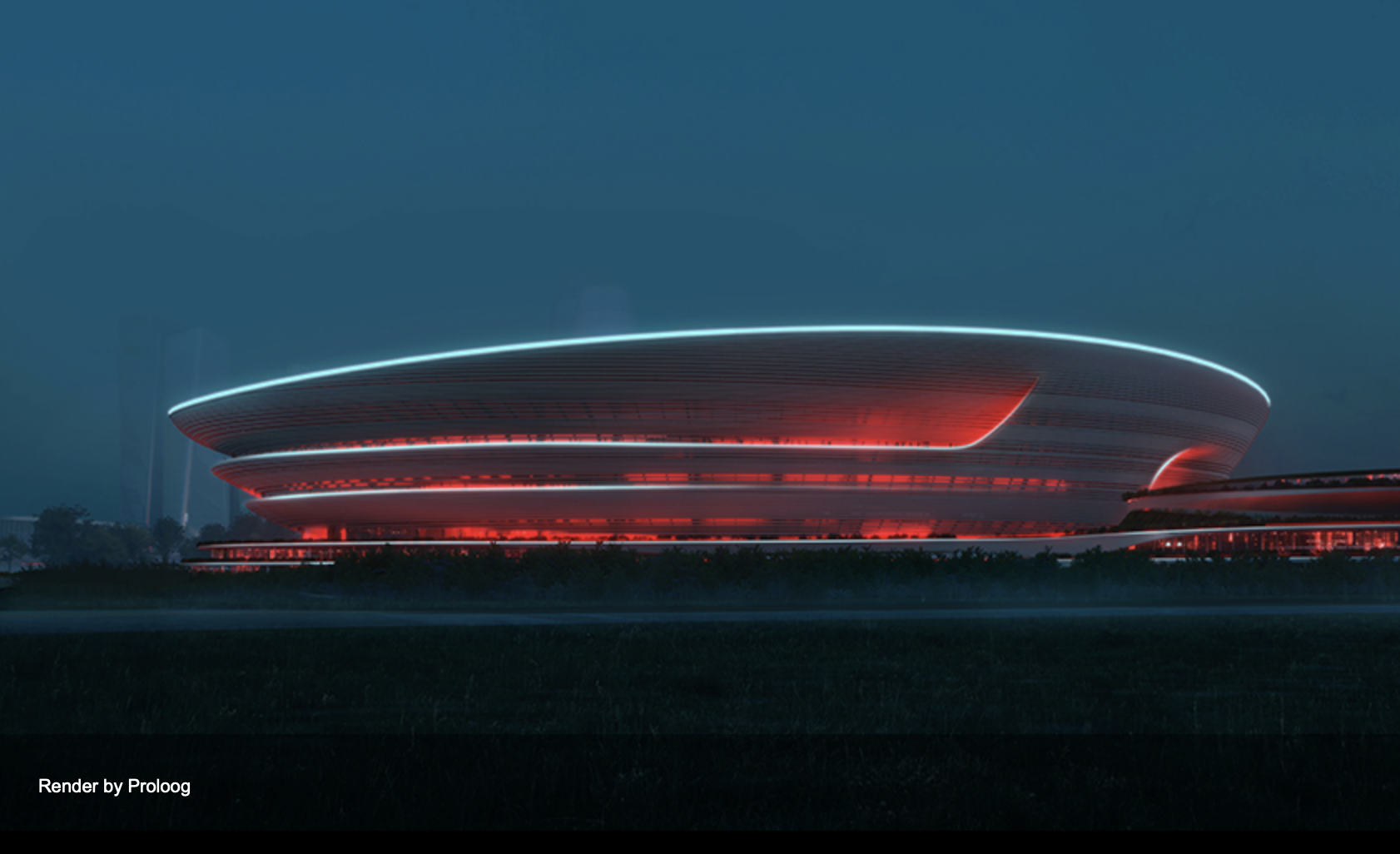
Football stadium centrepiece
As the largest venue within the centre, the 135,000sqm football stadium is situated on the eastern side of the new park to face the city. Located to the west and south of the stadium, the indoor arena and aquatics centre are connected to the stadium by the centre’s layered podium that weaves through the site.
Informed by the terracing of the tea farms on Hangzhou’s surrounding hillsides, the striated 45,000sqm podium houses the sports centre’s ancillary facilities that are shared between the venues including training and fitness halls, locker rooms, offices as well as shops, restaurants and cafes overlooking the podium’s courtyard and terraces.
Unlike the solid façades of most stadiums, the façade of the Hangzhou International Sports Centre’ stadium is open to the exterior with louvres sheltering terraces that host a variety of food and beverage outlets offering panoramic views across the city.
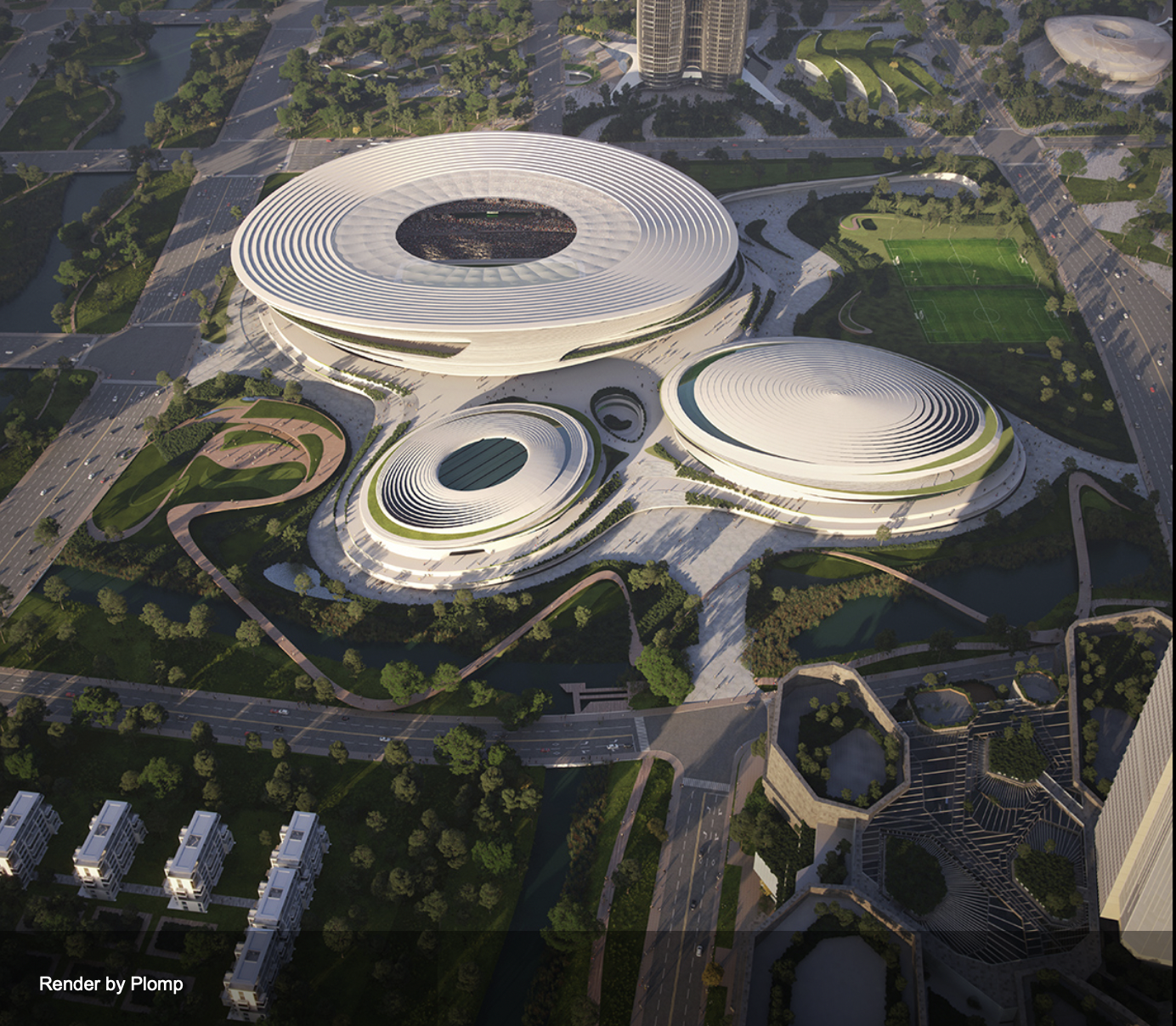
Designed to FIFA standards, the stadium’s seating bowl is configured to bring spectators as close as possible to the field of play and ensure excellent, unrestricted views from every seat; creating an intense matchday atmosphere for players on the pitch and fans seated throughout the stadium. These programmatic requirements define geometries that are expressed as undulations within the louvred façade.
The stadium’s louvred façade blurs the boundary between interior and exterior. The louvres’ materiality and detailing give the stadium a stratified, geological appearance of solidity when viewed from nearby. When viewed from a distance, the louvred façade becomes transparent, connecting the public spaces beneath the stadium’s seating bowl with the city.
With a capacity of 19,000 seats, the 74,000sqm indoor arena can operate independently to the stadium and is designed with maximum operational flexibility to host many of China’s most popular spectator sports, such as basketball, in addition to large music and cultural events.
Situated on the western edge of the park, the 15,000sqm aquatics centre incorporates two 50-metre pools suitable for competitions, training and teaching at all levels from beginner to elite swimmers and divers. Accommodating district-level competitive events with up to 800 spectators, the pools can also host local schools for lessons, ensuring many thousands of children each week will learn the essential life skill of swimming.
Green Building Program
Located within the warm temperate climate of Hangzhou, the International Sports Centre has been designed to the highest 3-Star rating of China’s Green Building Program with each venue providing optimal conditions using natural hybrid ventilation most of the year.
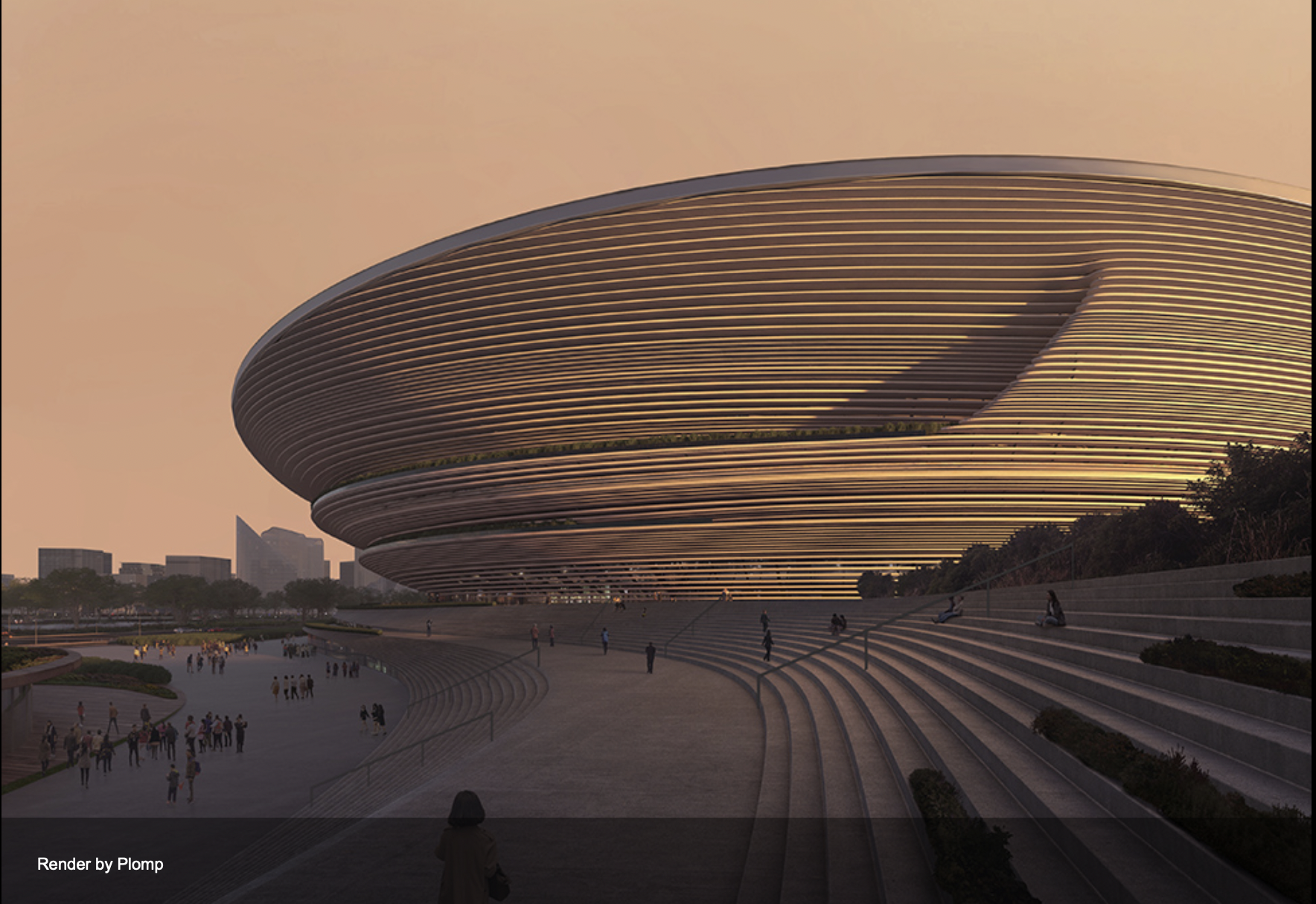
Annual solar irradiation analysis has determined the composition of the façade’s external louvres while photovoltaics will harvest solar power for all venues. Ground heat exchange and recovery systems will ensure the most efficient operations of all facilities.
The centre’s landscaping establishes wetlands along the riverbank that are integral to the district’s drainage network. Collecting and channelling rain and grey-water for filtration and re-use, this network uses aquatic flora and fauna native to the region to naturally remove contaminants.
To reduce the embodied carbon throughout the project, ZHA’s optimisation processes minimise the amount of materials required for the structure and are integrated with local supply chains and procurement systems that have been developed to increase the recycled and recyclable content.
In contrast to the single-use programming of most large stadiums that only welcome visitors on match days and act as an obstruction to the city’s urban fabric when not in use, the many varied sporting, recreational and leisure facilities of Hangzhou International Sports Centre, in addition to its public plazas and riverfront park, ensure the centre will be a popular gathering place for its community throughout each day and evening.
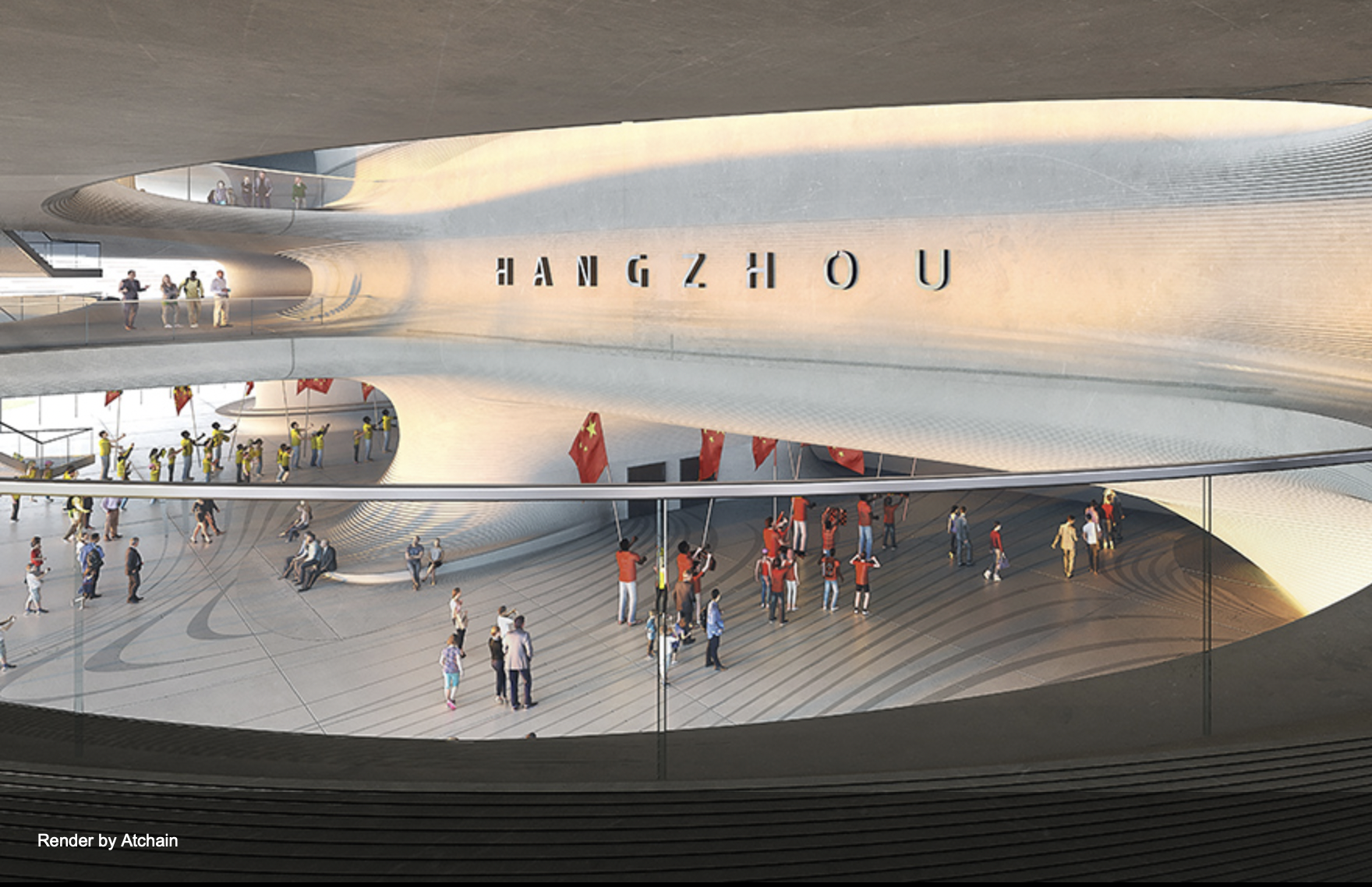
Project Team
Architects: Zaha Hadid Architects (ZHA)
Design: Patrik Schumacher
ZHA Project Director: Charles Walker, Nils Fischer
ZHA Project Associate: Jakub Klaska, Lei Zheng
ZHA Competition Team: Joshua Anderson, Daniel Boran, Chun-Yen Chen, Hung-Da Chien, Michael Forward, Matthew Gabe, Rupinder Gidar, Jinqi Huang, Charlie Harris, Ivan Hewitt, Han Hsun Hsieh, Sonia Magdziarz, Xin Swift, Chris Whiteside
Consultants:
Sports Consultant: Clive John Lewis
Lighting: Lichtvision Design Ltd
Source: ZHA
Main image render (top) by BrickVisual
Sports Venue Business organises and delivers ALSD International – EMEA’s leading event for the Premium Seat & Hospitality sector, with a focus on optimising revenue through New Builds, Renovations & Service Expansions – on behalf of the ALSD (Association of Luxury Suite Directors).
The 2022 event featured a high-level conference, an exhibition showcasing industry-leading products & services, networking events and a behind-the-scenes tour of Tottenham Hotspur Stadium, powered by THFC and Levy UK + Ireland. Details on the 2023 event, to follow soon.
#ALSDInternational – Europe’s leading event for the Premium Seat & Sports Hospitality sector
#ALSD – Leading the Premium Seat sector for the last 30 years
#sportsvenuebusiness – The leading platform for sector news, views & developments

